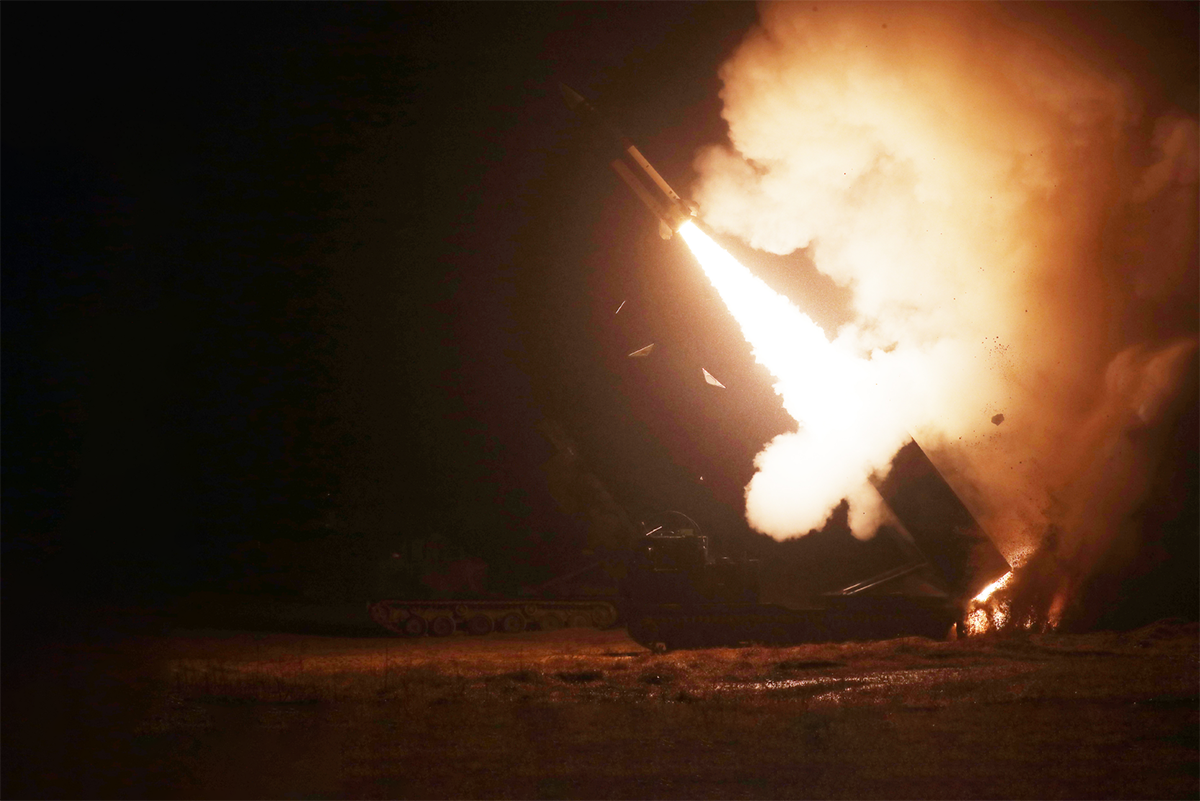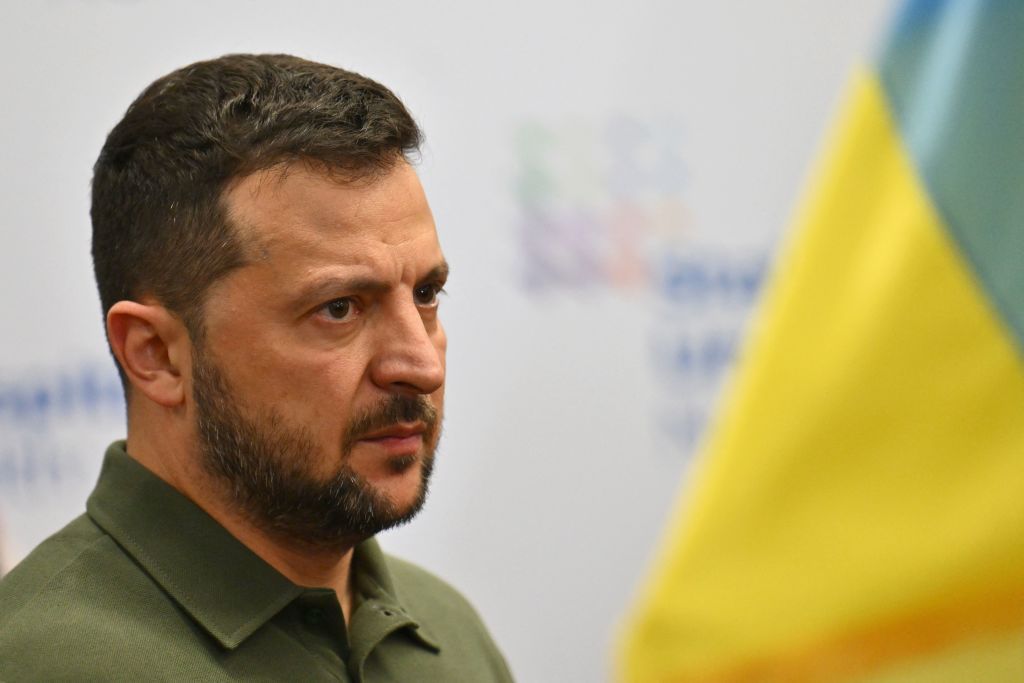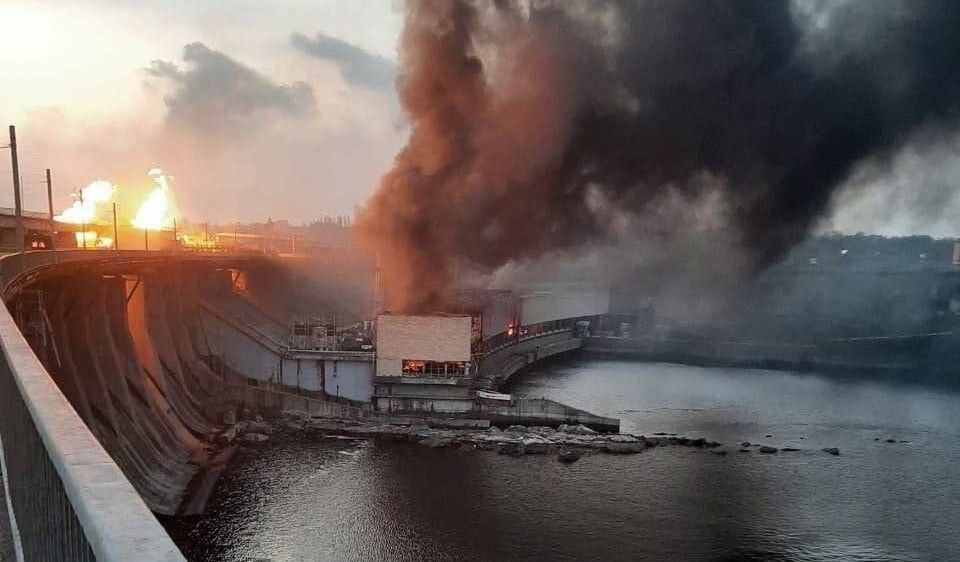When and how will US aid impact the front lines in Ukraine?

After almost seven months of delays, the U.S. Congress finally approved $61 billion in aid for Kyiv, mostly in the form of military assistance.
The legislation was promptly signed by U.S. President Joe Biden, and shortly after, the Pentagon announced the first defense package of $1 billion, containing armored vehicles, artillery shells, air defense missiles, other ammunition, and more.
The news was met with jubilation in Ukraine, but more sober voices warned that while this package can help avert the darkest scenario, it is no silver bullet. Previous delays have already done their damage, and some experts believe Ukraine will continue to suffer setbacks for weeks before the aid arrives in full.
The country's defenders are already in dire straits in some parts of Donetsk Oblast, namely in the town of Chasiv Yar west of occupied Bakhmut. Ukrainian and Western officials said that due to Kyiv's artillery shortages, Russia could outshoot Ukraine's forces 10 to one in some areas.
Nevertheless, the U.S. aid provides a much-needed boon. In the coming weeks, artillery shells and other ammunition can help stabilize the front, while air defense supplies can help better protect Ukrainian cities and infrastructure.
In addition, Kyiv is finally seeing deliveries of newer systems, like long-range ATACMS missiles, that increase their chances of successfully striking the Russian rear.
Artillery shells, air defenses, ATACMS
The first package the Pentagon hastened to unveil contains many of the items Ukraine has been calling for the most, such as RIM-7 and AIM-9M air defense missiles or 105 mm and 155 mm artillery shells.
This covers Ukraine's top priorities, according to retired military officer and defense expert Viktor Kevliuk.
"The highest priority are anti-aircraft missile systems that should strengthen the air defense of troops in the directions of enemy activity, shells for artillery, tanks, and armored combat vehicles that should cause maximum losses to the enemy's manpower, and long-range anti-aircraft missile systems for covering Kharkiv, Odesa, Dnipro, Zaporizhzhia, and Lviv," Kevliuk, who works at the Center for Defense Studies, told the Kyiv Independent.
The package also included Bradley infantry fighting vehicles, Stinger anti-aircraft missiles, HIMARS ammunition, mortar rounds, and more. Washington also finally green-lit the supply of newer, long-range ATACMS missiles, revealing that it had actually secretly shipped the first of these arms already as part of its March aid package.
"The appearance of ATACMS missiles will increase the capabilities of the Defense Forces to attack the enemy's operational rear facilities, its aircraft, and air defense systems," Kevliuk said.
This would force Russian forces to deploy their logistical centers and aircraft further back in the rear. Jan Kallberg, a senior fellow at the Center for European Policy Analysis (CEPA), told the Kyiv Independent this would further compound Russia's difficulties with transport and logistics.
"The Russians use the old Soviet style, with big logistics centers… the longer the fires can reach, the further back they have to move their big logistic supply points, " he said, pointing out that Russian supply distribution is dependent on hand-loaded trucks with limited cargo capacity.
"So the Russians may have the materiel to supply the fight, but their distribution system fails."
With a range of 300 kilometers (close to 190 miles), ATACMS could also be easily used to strike at any targets in occupied Crimea, as they reportedly already have in a strike on the Dzhankoi airfield on April 17.
The missiles could also be theoretically used to strike the Crimean Bridge, which Russia uses to supply its troops in southern Ukraine.
Another important development is that Ukrainian forces are getting a "deeper supply" of equipment they are already familiar with, such as often-praised Bradley vehicles, but also new and modern lethal aid, Kallberg noted.
"You see an increasing number of highly modern equipment. You're not getting the surplus from the 1980s and the 1990s," the expert said, naming not ATACMS but also Ground Launched Small Diameter Bomb (GLSDB), guided missiles so modern that they are not used by any other military so far.
While the latter weaponry was not confirmed as part of the latest package, the media reported that the first batch should have arrived in Ukraine in early 2024.
The $1 billion package should only be the first of many to come. The aid bill adds about $8 billion to the presidential drawdown authority (in addition to almost $4 billion already there), which allows direct shipments of standing U.S. stocks.
Billions more are devoted to new contracts and purchases for Ukraine, but those will take time. For Ukrainian defenders, time may be a luxury they do not have.
Enough time for Chasiv Yar?
The hold-ups in American aid have already contributed to Russian forces scoring victories on the battlefield while undermining Ukraine's ability to hold its ground.
In February, Ukrainian forces lost Avdiivka, a fortified front-line city in Donetsk Oblast, due to the lack of artillery shells and air defenses to disrupt Russian ground attacks and glide bomb airstrikes. The capture of the city became Russia's first major gain since conquering Bakhmut in May 2023.
While the Avdiivka direction remains one of the hottest sectors of the front, Moscow's troops shifted their focus on Chasiv Yar, an elevated town some 50 kilometers (31 miles) north of Avdiivka that holds the key for further Russian advances into Donetsk Oblast.
A Ukrainian military spokesperson said on April 22 that around 20,000 to 25,000 Russian troops are trying to storm Chasiv Yar and the surrounding settlements.
Despite the newly approved package, American assistance is unlikely to change the situation at Chasiv Yar, the Avdiivka area, or other hot sectors in the short term, Kevliuk says.
"No, the aid will not affect the situation near Chasiv Yar and Avdiivka. Events are developing right now, and the equipment will be delivered in at least a week or two," the expert commented.
However, if the Kremlin indeed hopes to capture the town by May 9 for its Victory Day celebrations, Ukrainian defenders would still have a chance of getting some of the much-needed aid within the time span mentioned by Kevliuk.
Washington assured that once the aid bill is signed, the first supplies can be on their way within days. U.S. National Security Council spokesperson John Kirby said that the first matter at hand will be covering Ukraine's most urgent needs.
"Thanks to organizations like the Security Assistance Group-Ukraine, plus our efforts with international allies and partners, we have created a very robust logistics network to enable the delivery of aid into Ukraine," Pentagon spokesperson General Pat Ryder said on April 23.
Reportedly, some of the assistance earmarked in Ukraine was already located in Germany and Poland, cutting down the time needed for the delivery. In spite of that, many observers remain skeptical of an immediate impact.
According to the Institute for the Study of War, "the logistics of transporting U.S. materiel to the front line in Ukraine will likely mean that new U.S. assistance will not begin to affect the situation on the front line for several weeks."
"The front-line situation will therefore likely continue to deteriorate in that time, particularly if Russian forces increase their attacks to take advantage of the limited window before the arrival of new U.S. aid," the analysts said.
Russia is not going to make it easy for Ukraine, either. With the impending arrival of the U.S. aid, Russian Defense Minister Sergei Shoigu said that Russian forces would increasingly focus on Ukraine's logistics centers and arms warehouses.
Provided the U.S. aid arrives quickly enough, it can help Ukraine "blunt the current Russian offensive" and "stabilize the front," even though it may still suffer setbacks in the coming weeks, the ISW noted.
Nevertheless, the knowledge that the aid is on its way has value in itself.
"The most immediate short-term of the aid is a morale boost," said Kallberg. Ukrainian troops are likely to be less afraid of using their reserve ammunition, knowing they will be able to restock that supply soon.
Looking ahead
Kyiv has repeatedly warned of a possible major Russian push in the coming months, underscoring the need for increased assistance.
President Volodymyr Zelensky has said that Russia may launch a major campaign either at the end of May or in June. According to Ukraine's military intelligence chief Kyrylo Budanov, Kyiv will likely face a difficult, albeit not catastrophic, situation in that period.
Moscow has been apparently making preparations for a year of heavy battles, ramping up not only defense production but also recruitment efforts.
Ukraine's Ground Forces Commander Oleksandr Pavliuk said in March that the Russian military is mustering a force of 100,000 troops, potentially for the coming offensive. Zelensky said that Moscow is preparing to mobilize 300,000 soldiers by June.
In spite of that, Kevliuk said he does not see signs of a major push forming in the near future.
"I don't see any enemy group advancing anywhere in May or June," he said in a comment for the Kyiv Independent, saying he instead expects continued local battles in preparation for a possible offensive in the fall in Donetsk Oblast.
In these coming battles, U.S.-armed Ukrainian soldiers have a good chance of heavily degrading Russian manpower and equipment, Kallberg believes.
"One thing that this highly lethal equipment will do is it will increase even further Russian losses," Kallberg said, underscoring the heavy casualties Russian troops have already suffered in terms of experienced contract soldiers and officers, especially in recent months.
"For a real offensive combat, you need bigger units who can support each other… That's not going to work because Russia doesn't have tactical leaders like captains and lieutenants.
"So, facing more modern Ukrainian arms… any offensive they try will likely be a disaster."
Another crucial boon provided by the U.S. aid is air defense ammunition. While Ukraine weathered the winter strikes fairly well, the more recent spring attacks against the energy infrastructure took a heavy toll.
Several thermal plants were completely destroyed, while Kharkiv, Ukraine's second-largest city, suffered major blackouts. According to Zelensky, Ukraine failed to protect the Trypillia Thermal Power Plant from destruction by Russian missiles due to air defense ammunition shortages.
While Ukraine is certain to feel the consequences of these attacks by the summer, reinforced air defenses can help prevent further damage and protect repair works.
Speaking to the Russian independent outlet Meduza, Zelensky's advisor, Mykhailo Podolyak, said that American warehouses have significant stockpiles of shells, missiles, and other consumables.
Washington, like the vast majority of other allies, has been reluctant to provide additional air defense systems, however. Germany has been spearheading the efforts in this area, pledging its third Patriot system and launching an allied air defense initiative for Ukraine.
This parallels how the U.S. artillery supplies are complimented by the Czech-led ammunition initiative. Both these cases underscore that despite the U.S.'s leading role, European support remains a crucial pillar of the pro-Kyiv coalition.
As Podolyak told Meduza, the American package alone does not secure parity with Russia.
Moscow has allocated 10.775 trillion rubles ($116 billion) under the "national defense" section of its 2024 federal budget, a 70% increase compared to 2023. In addition, around $117 billion went to classified spending, with at least some of that section devoted to Russia's war against Ukraine.
"Of course, $61 billion is not some gigantic amount that will completely cover Ukraine’s arms deficit, taking into account the amount of money Russia spends annually on military equipment," Podolyak said.
"(But) the very approval of American assistance shows that the pro-Ukrainian coalition has been preserved and continues to work. This is extremely important."


















